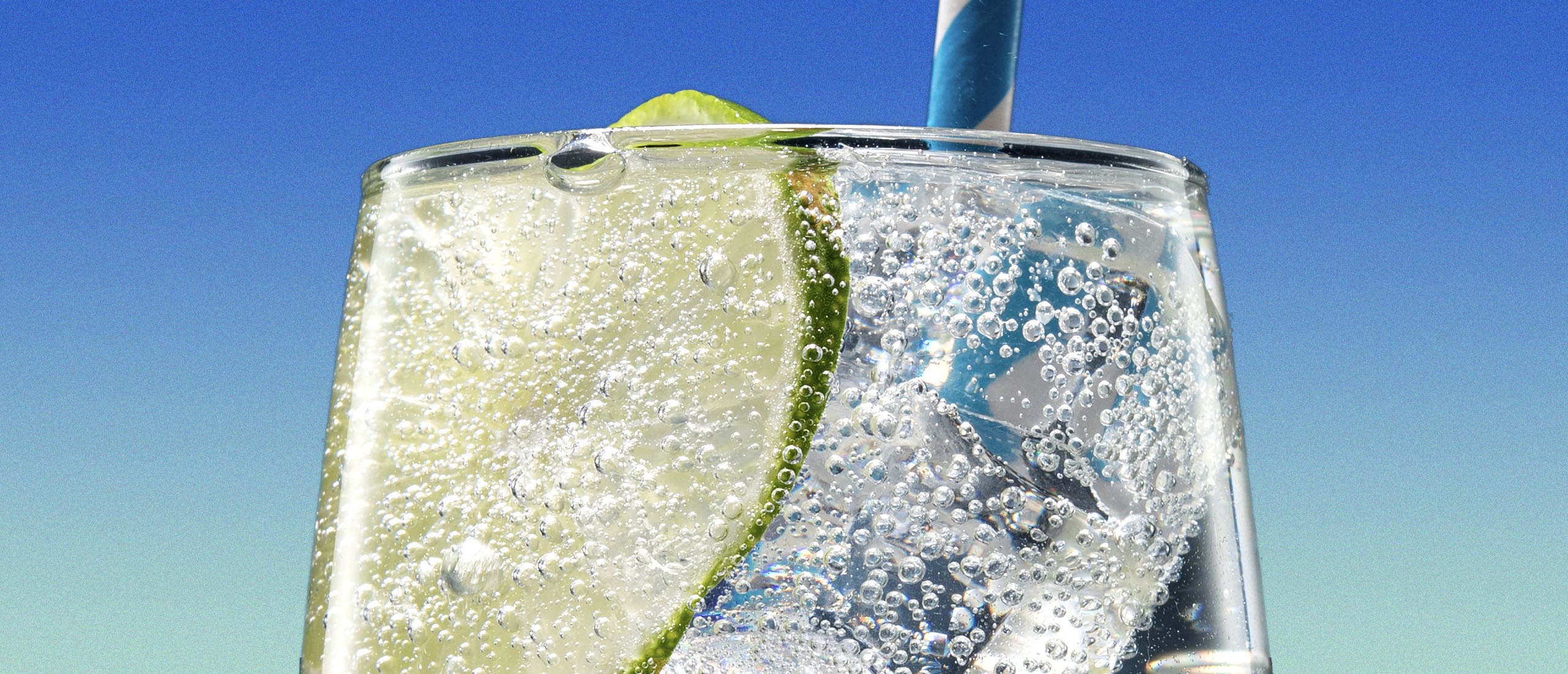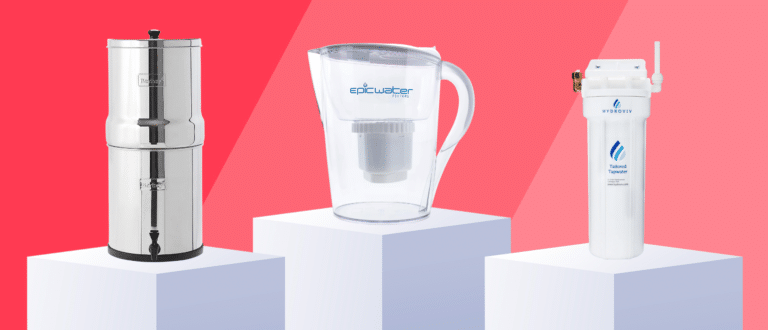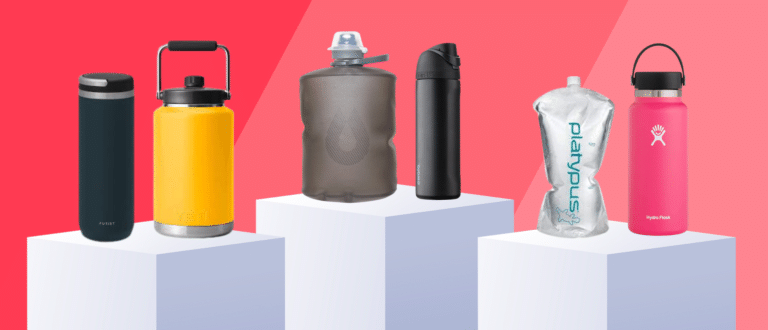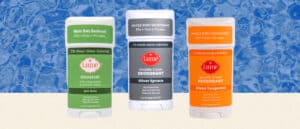
Are There PFAS in Sparkling Water?
Fast Facts
- PFAS are a group of artificial chemicals with known toxicity to the human body.
- PFAS are linked to health problems such as altered immune and thyroid function, insulin dysregulation, cancer, and more.
- Many sparkling waters have been found to contain trace levels of PFAS.
Refreshing, sugar-free, fun, fizzy—nothing hits better than sparkling water on a hot summer day. But not all sparkling waters are created equal. Some are contaminated with a group of artificial chemicals called PFAS that have been linked to health problems such as cancer, and autoimmunity and thyroid hormone disruption.
A new study of more than 45,000 water samples around the world found that about 31 percent of groundwater samples and 16 percent of surface water samples tested—which weren’t near any obvious source of contamination—had PFAS levels considered harmful to human health by the Environmental Protection Agency (1).
Before you crack open a can of bubbly, check out which brands contain chemical traces of PFAS, and which don’t.
What Are PFAS?
PFAS, or per-and poly-fluoroalkyl substances, are a group of synthetic, man-made chemicals used to create everything from non-stick pans and rain jackets, to take out wrappers and dental floss.
Because of their widespread use, they leach into water, dirt, and air—so can crop up in foods and beverages.
PFAS are often referred to as “forever chemicals” because they don’t break down over time. That means they can accumulate in the environment—and in your body.
Are PFAS Dangerous?
Exposure to PFAS has been linked to harmful effects in humans and animals (2). PFAS have been linked to altered immune and thyroid function, liver disease, lipid and insulin dysregulation, kidney disease, birth defects, and kidney, liver, and testicular cancer (3). While current findings are concerning, researchers note they warrant further study.
PFAS Are Linked to Low Testosterone
Interestingly, men might retain higher levels of PFAS in their system than women (4). A growing body of research suggests PFAS interfere with male reproductive hormones, increasing your risk of infertility (5). PFAs are linked to thyroid hormone disruption, which can affect testosterone levels (6).
One study from China, of 664 adult men, found exposure to PFAS was associated with reductions in semen quality, including a lower percentage of progressive sperm and DNA fragmentation (7). A follow-up study showed that seminal PFOA and PFOS (the two most common PFAS) levels were associated with a decrease in total and free testosterone (8).
Another, from the US, suggests PFA exposure can reduce semen quality, characterized by a lower overall percentage of sperm with coiled tails (9).
What Level of PFAS is Safe?
According to the U.S. Environmental Protection Agency (EPA) no level of PFAS is safe. “For PFOA and PFOS, EPA is setting a Maximum Contaminant Level Goal, a non-enforceable health-based goal, at zero. This reflects the latest science showing that there is no level of exposure to these contaminants without risk of health impacts, including certain cancers,” they concluded in a recent press release.
As of April 2024, the EPA finalized its nationwide restriction on PFAS in drinking water—limiting PFOA and PFOS to four ppt per chemical each. It’s not zero, but it’s a lot better than the EPA’s previous voluntary guideline of less than 70.
“The levels at which negative health effects could occur are much lower than previously understood when EPA issued the 2016 health advisories for PFOA and PFOS (70 ppt) including near zero for certain health effects,” notes an EPA June 2022 press release.
The new restrictions also limit other known PFAS—like PFNA, PFHxS, and GenX chemicals—to less than 10 ppt. Because these chemicals are often found in mixtures, they’re also placing limits for any mixture of two or more of the following PFAS: PFNA, PFHxS, PFBS, and GenX chemicals.
The EPA claims once fully implemented “the rule will prevent thousands of deaths and reduce tens of thousands of serious PFAS-attributable illnesses.” That said, we’ll have to wait to see the effects role out on grocery store shelves until PFAS are addressed at the source—the water sparkling water and other beverages are made with.
Does Sparkling Water Contain PFAS?
Because of their widespread use and persistence in the environment, PFAS are present at low levels in drinking water.
When put to the test, a few brands of drinking water were found to contain detectable levels of PFAS, according to a Consumer Reports study (10).
Interestingly, the chemicals were more common in sparkling waters than still. Researchers suspect this is tied to the carbonation process, or high levels of PFAS in the source water.
Sparkling Water Brands That Contain High Levels of PFAs
We can’t control the PFAS on grocery store shelves, but we can control the ones we choose to consume. None of these sparkling water brands exceeded the suggested PFA levels currently recommended by the EPA, but they did contain trace labels of PFAS above one ppt, according to the Consumer Reports study (10).
- Topo Chico PFAS (9.76 ppt)
- Polar Natural Seltzer Water PFAS (6.41 ppt)
- Bubly Sparkling Water PFAS (2.24 ppt)
- Poland Spring Sparkling Water PFAS (1.66 ppt)
- Canada Dry Sparkling Seltzer Water PFAS (1.24 ppt)
- LaCroix Natural Sparkling Water PFAS (1.16 ppt)
- Perrier Natural Mineral Water PFAS (1.1 ppt)
Which Sparkling Water Brands Are Lowest in PFAS?
If your heart just sank a little, don’t stress. There are still plenty of widely available sparkling water brands with less than one to zero ppt of PFAS detected.
- Schweppes PFAS (0.58 ppt)
- Dasani PFAS (0.37 ppt)
- San Pellegrino PFAS (0.31 ppt)
- Spindrift PFAS (0.19 ppt)
- Sound (made with reverse osmosis water—which helps filter out PFAS)
- Nixie (made with reverse osmosis water)
- AuraBora (made with reverse osmosis water)
- Mountain Valley (not detected)
- Sparkling Ice PFAS (not detected)
Healthiest Sparkling Water Brands
PFAS aren’t the only thing to look for in a sparkling water. The healthiest sparkling waters are low in added sugar and natural flavors—an umbrella term for processed ingredients that add flavor but have little to no nutritional value (11). If you prefer a touch of sweetness opt for Spindrift—which is flavored with real fruit—over cheaper options like LaCroix and Bubly, which rely on natural flavors.
If calories are your concern, soda water, sparkling water, seltzer, and mineral water all contain zero calories. However, mineral water is packed with additional minerals like sodium, calcium, magnesium, and zinc; and, could be a good way to boost mineral intake (12). When selecting a mineral water choose a low PFA option like San Pellegrino.
SHOP HEALTHY SPARKLING WATER
The Bottom Line
PFAS have been shown to have adverse effects on human health, but many brands of sparkling water contain trace amounts. To minimize your risk and avoid unwanted chemicals in your bubbly beverage, choose a sparkling water low in PFAS, artifical sweeteners (aspartame, acesulfame potassium, sucralose), and natural flavors.
References
1. Grunfeld, D. et al. (2024). Underestimated Burden of Per- and Polyfluoroalkyl Substances in Global Surface Waters and Groundwaters.
2. US Department of Health & Human Services (2021). Toxicological Profile for Perfluoroalkyls.
3. Fenton, S. et al (2021). Per- and Polyfluoroalkyl Substance Toxicity and Human Health Review: Current State of Knowledge and Strategies for Informing Future Research.
4. Kato, K. et al (2011). Trends in Exposure to Polyfluoroalkyl Chemicals in the U.S. Population: 1999-2008.
5. Tarapore, P. et al (2021). Perfluoroalkyl Chemicals and Male Reproductive Health: Do PFOA and PFOS Increase Risk for Male Infertility.
6. Coperchini, F. et al. (2021). Thyroid Disrupting Effects of Old and New Generation PFAs.
7. Pan, Y. et al (2019). Profiles of Emerging and Legacy Per-/Polyfluoroalkyl Substances in Matched Serum and Semen Samples: New Implications for Human Semen Quality.
8. Cui, Q. et al (2020). Exposure to Per- and Polyfluoroalkyl Substances (PFASs) in Serum Versus Semen and Their Associations With Male Reproductive Hormones.
9. Louis, G. et al (2015). Perfluorochemicals and Human Semen Quality: the LIFE Study.
10. Felton, R. (2020). What’s Really In your Bottled Water.
11. U.S. Food and Drug Administration (2022). CFR—Code of Federal Regulations Title 21, Subchapter E—Animal Drugs, Feeds, and Related Products
12. Quattrini, S. et al (2016). Natural Mineral Waters: Chemical Characteristics and Health Effects.














